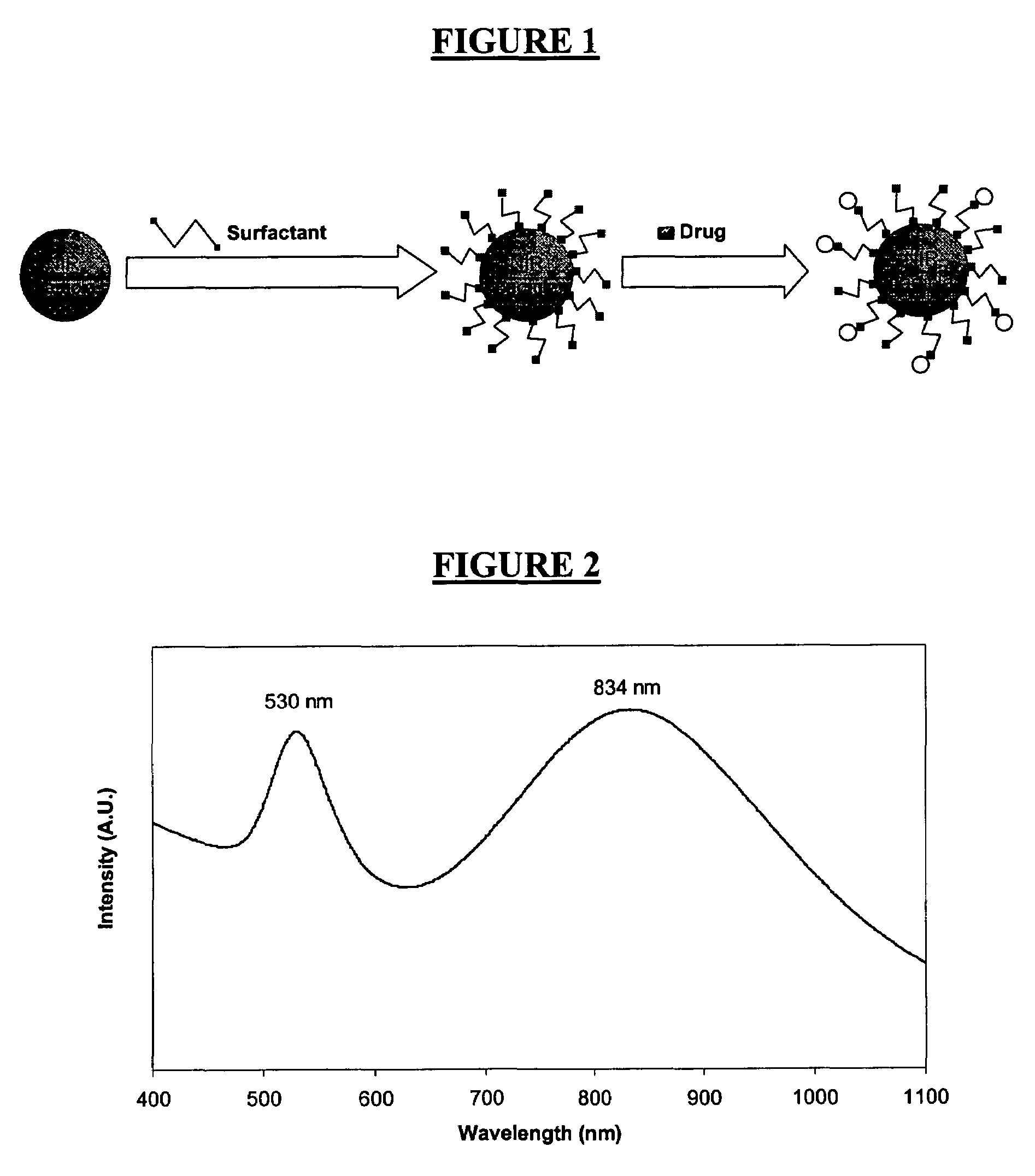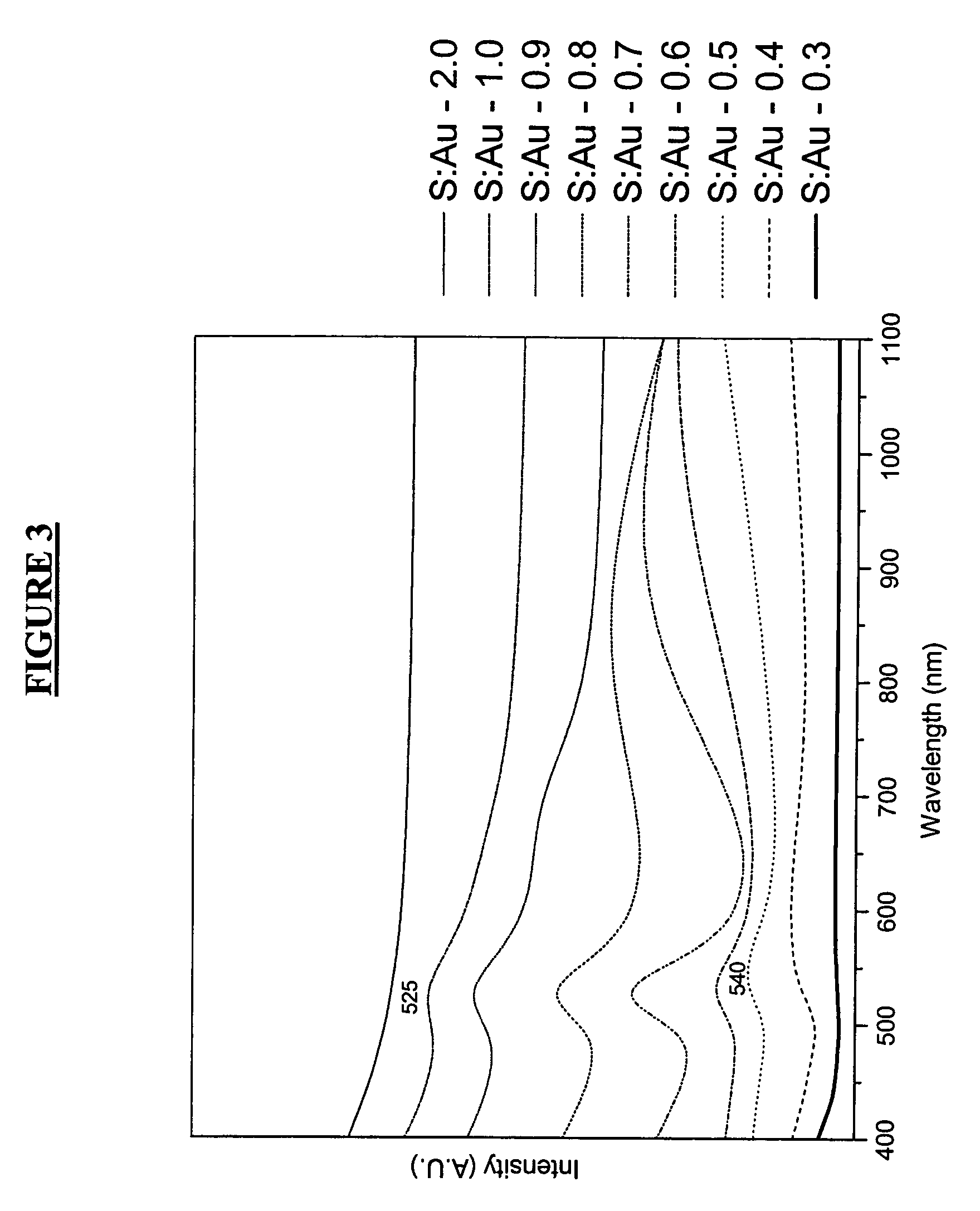NIR-sensitive nanoparticle
a nanoparticle, sensitive technology, applied in the field of nanoparticle complexes, can solve the problems of limited success rate of cancer treatmen
- Summary
- Abstract
- Description
- Claims
- Application Information
AI Technical Summary
Benefits of technology
Problems solved by technology
Method used
Image
Examples
example 1
Synthesis of NIR-Sensitive Nanoparticles
[0141]Aqueous sodium sulfide (Na2S) was used to reduce aqueous tetrachloroauric acid (HAuCl4) to synthesise the NIR-sensitive nanoparticles (Zhou et al., 1994; Averitt et al., 1997; Ren and Chow, 2003). 1 mM of Na2S aged for a day was mixed with 2 mM of HAuCl4 at S:Au molar ratios ranging from 0.5 to 0.9. The aging of Na2S was required due to the limited solubility of metal sulfides in water (Licht, 1988). These chemicals were purchased from Sigma Aldrich Corporation.
Synthesis of NIR-Sensitive Nanoparticle Complex
[0142]Anti-cancer drugs and other biomolecules can be loaded onto the NIR-sensitive nanoparticles by coating the particles with surfactants. These surfactants have functional groups that are reactive to the NIR-sensitive carriers (e.g. thiol groups) and anti-cancer drugs (e.g. carboxyl group). The surfactants used in the example were mercaptoacetic acid (MAA, HSCH2COOH), mercaptopropionic acid (MPA, HS(CH2)2COOH) and mercaptoundecanoi...
example 2
Modifications of the Example 1
[0169]In the above example, it can be concluded from HRTEM and XRD results that the NIR-sensitive properties were not likely to be caused by the formation of a crystalline structure of 5 nm Au (shell) and 30 nm Au2S (core) as previously suggested (Zhou et al., 1994; Averitt et al., 1997; Ren and Chow, 2003). The previous assumption made about the presence of a core-shell NIR-sensitive particle (Ren and Chow, 2003) is no longer enabling in this work. These NIR-sensitive particles were more likely to be nanocomposites of crystalline Au and amorphous AuxSy, (Auz)crystalline (Aux—Sy)amorphous. In addition, the current evidence suggests that the NIR-sensitive nanoparticles will undergo a photophysical change upon NIR exposure.
[0170]In addition, a method to manipulate drug loading and release by using different surface ligands has been suggested. MAA and MPA surface-modified colloids were more reactive than the MUA-modified colloids. This has enabled the incr...
PUM
 Login to View More
Login to View More Abstract
Description
Claims
Application Information
 Login to View More
Login to View More - R&D
- Intellectual Property
- Life Sciences
- Materials
- Tech Scout
- Unparalleled Data Quality
- Higher Quality Content
- 60% Fewer Hallucinations
Browse by: Latest US Patents, China's latest patents, Technical Efficacy Thesaurus, Application Domain, Technology Topic, Popular Technical Reports.
© 2025 PatSnap. All rights reserved.Legal|Privacy policy|Modern Slavery Act Transparency Statement|Sitemap|About US| Contact US: help@patsnap.com



